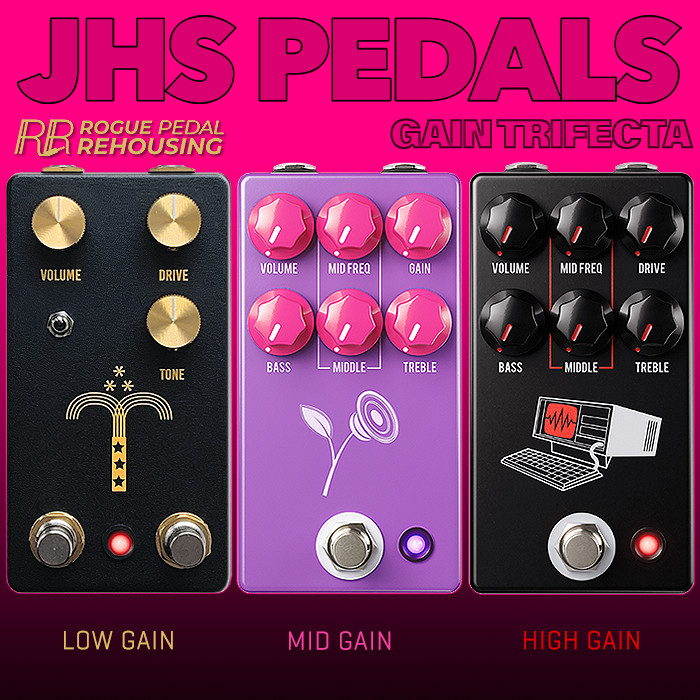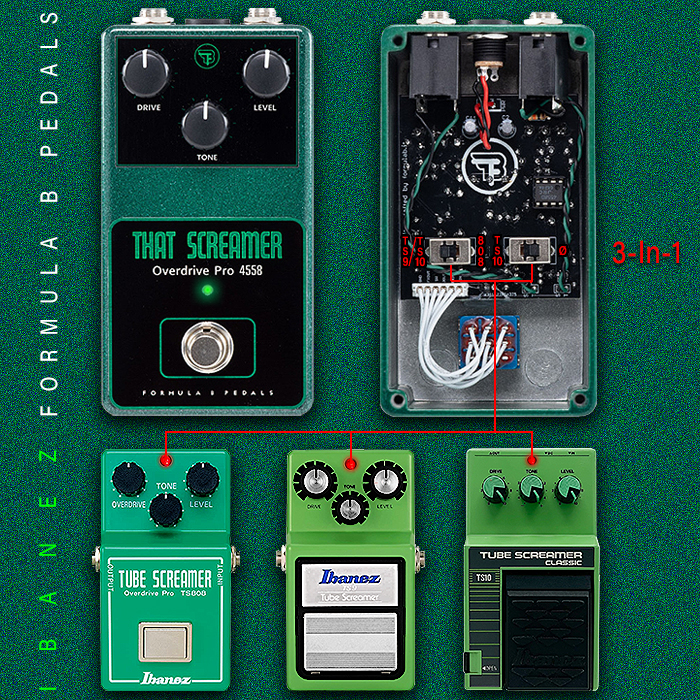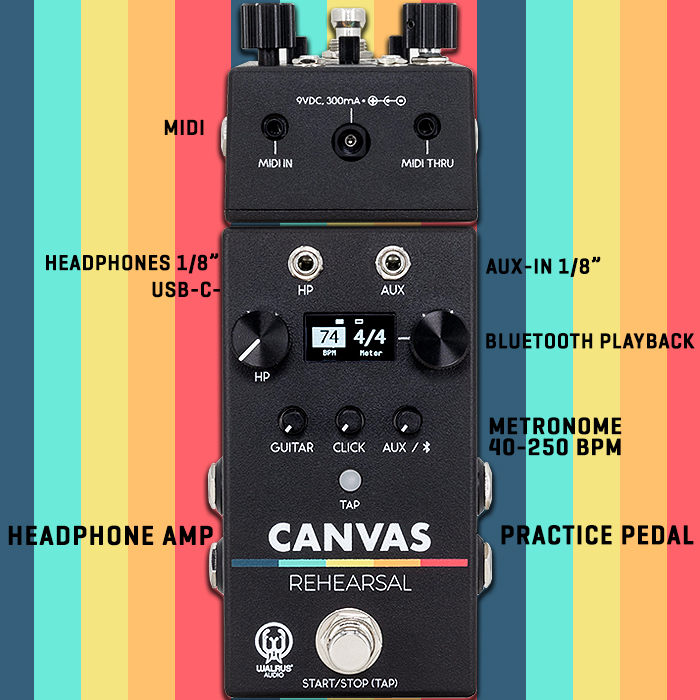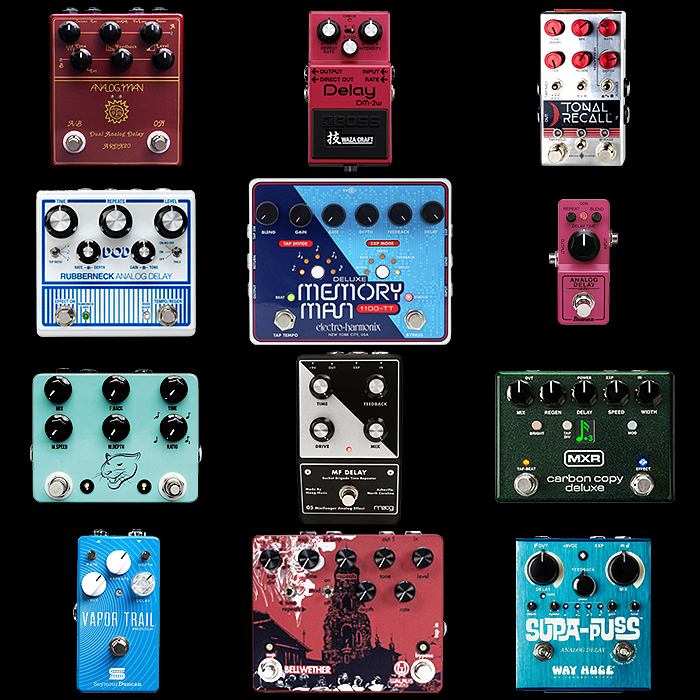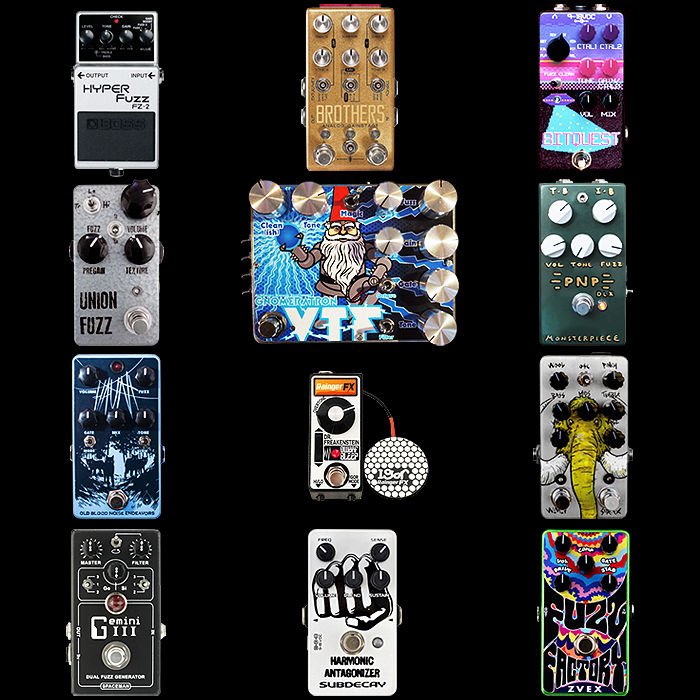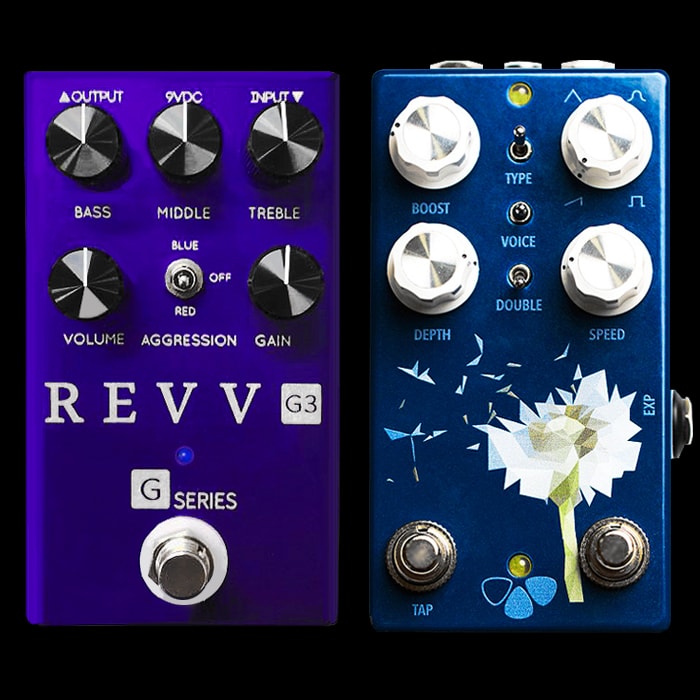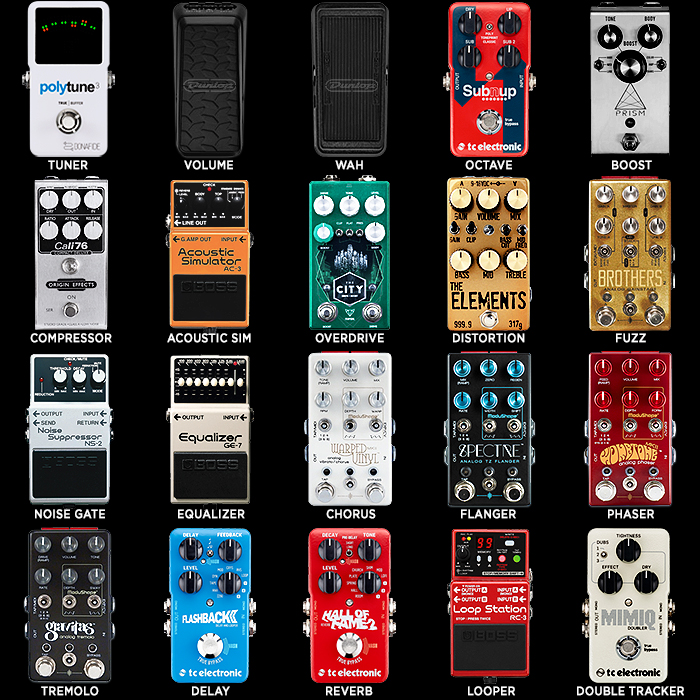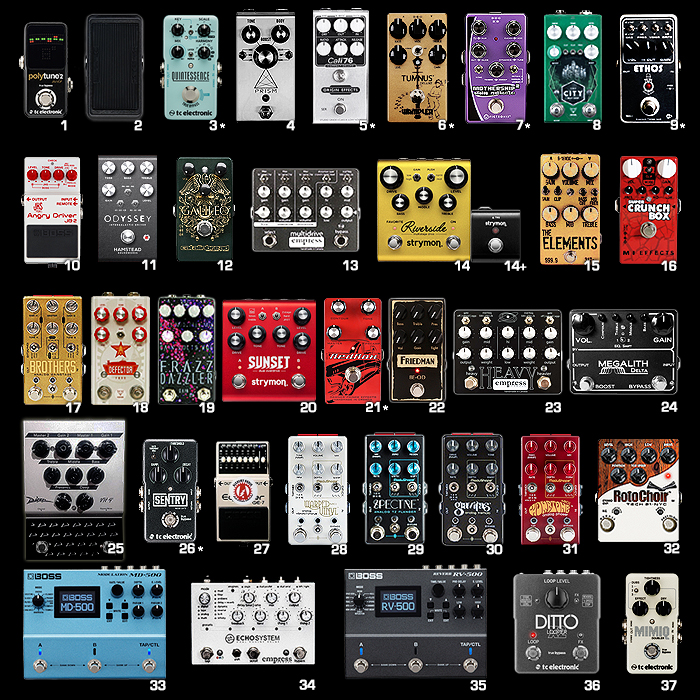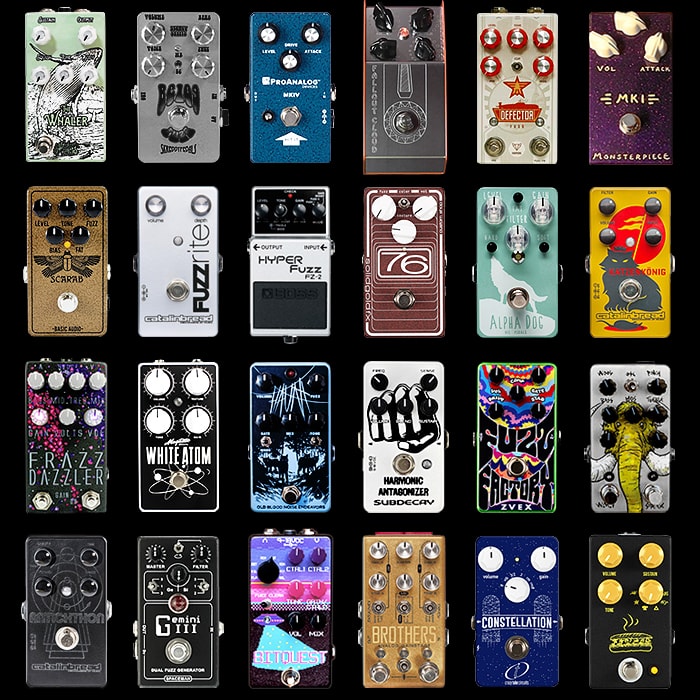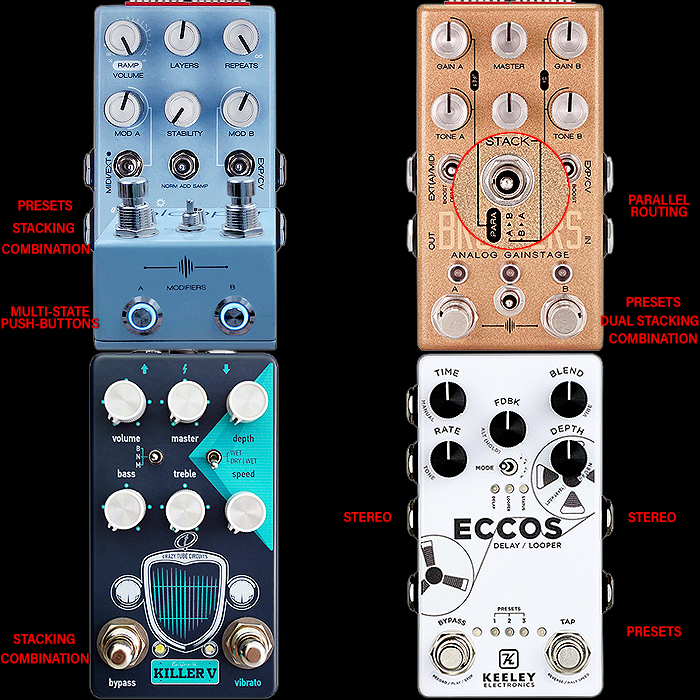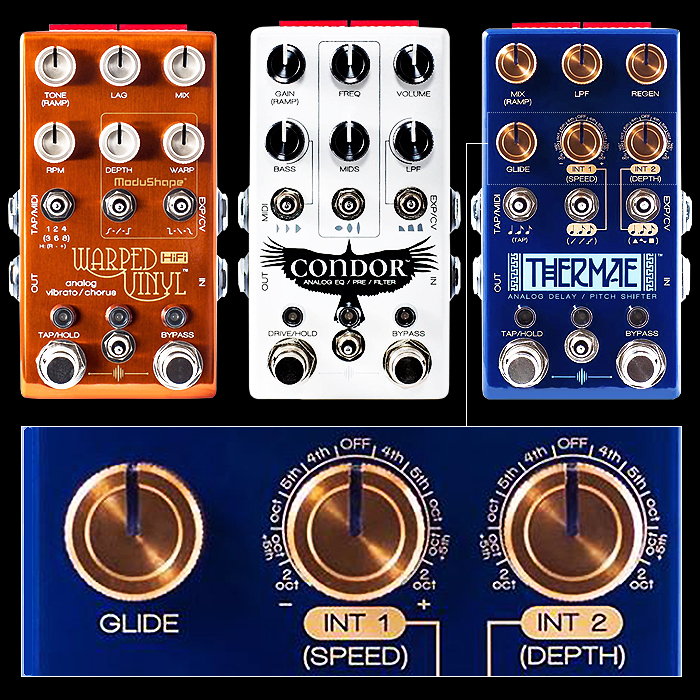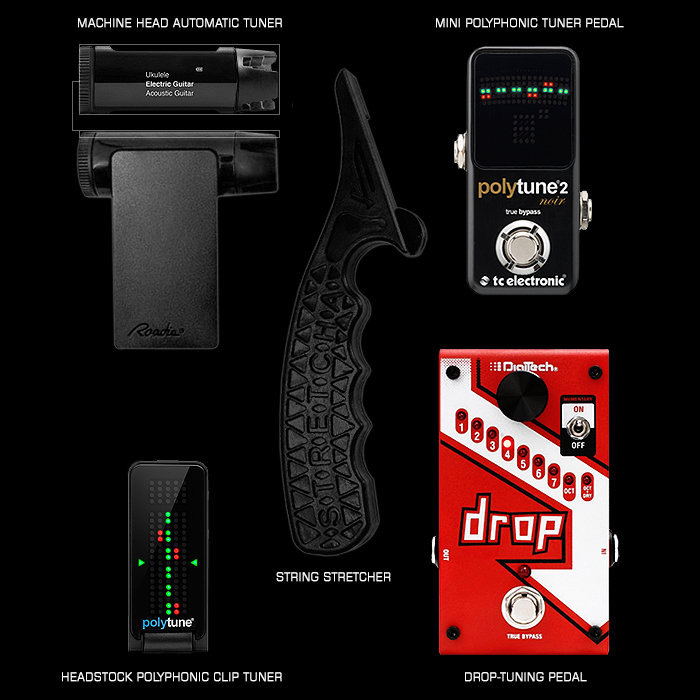Guitar Pedal Volume Drop Issues and Solutions and the need for expansive Output Level Control

Anyone who uses vintage and analogue modulation effects pedals will most likely have witnessed an obvious drop in volume when those pedals are activated. It’s one of the reasons I tend to avoid vintage effects - alongside their unusual power requirements, odd shapes and overly large footprints.
In some of my previous features and reviews I have been criticised for not mentioning the volume drop on certain pedals - like an EHX Electric Mistress - I though pretty much take it for granted that older effects of that ilk (oscillated / waverform modulation) will suffer a drop in volume - which is one of the main reasons I go for the more modern pedals.
Another reason is temperament and reproducibility. A lot of those older pedals tend to have somewhat unstable circuits and components which can yield very interesting but rather random results at times, and all of that makes consistency difficult - as well as the ability to easily replicate key settings. Fixing the dials in place often does not help, as a room temperature variance can cause a change to the tone - meaning the dials will have to be manipulated further to get back to your desired output. I believe a there is a lot more scope for analogue effects with digital control interfaces - where you can see settings in empirical format.
In any case, oscillation effects which chop up the frequency have a lesser density of sound - which means that even if the peaks are maintained, the output volume will still sound like it has dropped considerably. I have recently acquired a Boss TR-2 Tremolo from Alchemy Audio - whose main modification is the addition of a volume dial - to help maintain usable levels. I am very careful when I buy any sort of modulation pedal that there is an output level dial on the device. Although on occasions even this is insufficient as it does not offer sufficient boost to get you up to your set level of ’Unity Volume’.
So you may find that even with a volume / level dial you don’t have sufficient range of volume / headroom to make the pedal usable in your setup. Sometimes this may result in your needing to re calibrate the volumes right along your pedal chain, but often you decide that it’s just too much hassle and you’re better off with another pedal. At times I find myself diming the volume of a particular pedal - and I’m not at all happy if I have to go fully clockwise to get to where I need to be - so it is incumbent on pedal-makers to produce devices with sufficient range.
Some pedal-makers are more astute at delivering sufficient headroom, while others have ways to get around it. Here follows a brief list of pedals - per above visual, just a sample really - where I have encountered Volume issues - sometimes universally, and sometimes for specific presets and algorithms. For many of these there are workarounds, unfortunately for some pedals you encounter you may be bang out of luck.
You should be particularly careful with Chorus, Tremolo and Flanger pedals, as well as certain overdrives. Distortion pedals typically tend to have more headroom on-tap and don’t usually suffer similar issues, but there are always exceptions to every rule of thumb - so you do need to rely on trial and error too.
Chase Bliss Audio Brother Dual Channel Drive/Fuzz (Internal Trim-pots)
On this dual-channel analogue gain pedal, the Left Channel was significantly louder / higher output than the Right-Hand one. Fortunately Chase Bliss are good sorts and they sent me instructions on how to tweak internal trim-pots to better equalize the volume between those two channels. I also have the Strymon Sunset Dual Drive - which is systematically a quite similar pedal, while they do provide individual volume dials for each Channel on the top-face of the pedal, which would typically be my preference. In the case of the Chase Bliss Brothers though I was easily able to sort out my problem.
Chase Bliss Audio Gravity Tremolo (Power Supply)
Here the issue was insufficient output / headroom, even with a Volume dial at max - the pedal just was not loud enough with a 9V power-supply - so I upped it to the 18V alternative and hey presto! the appropriate level / range of Volume was achieved. Funnily enough the Chase Bliss Spectre Flanger V2 has no Volume dial, but comes out pretty much perfect for my needs - here I just use its Mix dial to adjust. Yet I feel confident that there probably are internal trim-pots for output adjustment if I needed them.
The Chase Bliss Wombtone Phaser V2 and Warped Vinyl Chorus/Vibrato V2 both have sufficient output volume dials. I am slightly put off the newer Warped Vinyl V3 as it replaces the Volume Dial with a Sag one - where as stated previously, I consider Volume dials essential on these sorts of modulation effects and do use the one on my Warped Vinyl a fair amount.
Eventide H9 Max Stompbox (Algorithm Output Volume)
This is one of my more recent additions, and I feel this pedal could really have done with a quick-access separate output dial - particularly for the drive algorithms. I am far from the only one that has encountered this issue - but the CrushStation algorithms are all set way too low - every other algorithm works fine by default while these drive ones need significant ramping up - by 12 decibels or more. In fact that is something Strymon seems to have over most of its competitors - in that you can pretty much seamlessly step between its algorithms, defaults and presets - while unity gain is maintained pretty much constantly throughout. For my Boss Workstation pedals and the H9 - I feel I have unnecessarily had to tweak core settings and even then, those should really be immediately accessible on the surface - which is a slight bugbear for me as regards the H9. The good thing here though is that it is relatively easily solvable. I do feel though that there are plenty of smart electronic workarounds that can be employed to help maintain unity volume - prevent unwanted compression/clipping and warble - they just haven’t reached these devices yet.
Stone Deaf Tremotron (Internal Trim-pot)
I had one of the earlier versions apparently which suffered a low output volume. Excellent support from Stone Deaf - who directed me to an internal trim-pot which was able to get me to where I needed - slightly fiddly, but easily resolved. I really wish pedal-makers would do more to make those sorts of functions more easily accessible - but then again this is grist for all the pedal-modders - and as long as there is some way to adjust then all good in the end.
Each of the above have been principal / primary pedals in my pedal-chain, and 3 of those are still pride-of-place. I would like to add also that I found volume output on the DigiTech Ventura Vibe not quite high enough, and the same goes for the TC Electronic Dreamscape to a lesser degree, as well as the Catalinbread Galileo Drive pedal. The primary replacement for the last mentioned was the Bearfoot FX Emerald Green Scream Machine - which has significantly more range available in every area - Volume, Gain and Tone / Voicing - and is thus decidedly the better choice for me.
Final Thoughts
Pedal volume is something that is easily overlooked, alongside overall ’Range’ - this encompasses all the different ’headrooms’ of a pedal including core tonality and gain / degree of distortion. Typically my favourite pedals are those which offer a higher degree of range and versatility - which just makes them more practical and usable all-round.
There is no doubt that some of the older vintage pedals still have magnificent and fairly unique voicings which make them useful as studio tools. Yet as active components within a dynamic pedalboard setup or pedal-chain - they can be very tricky to make use of at times. Vintage fuzz pedals with rare Germanium transistors are incredibly fussy where they go in the chain, and their tonality can vary significantly with changes in temperature. Some of the purists still feel it’s worth it, for me though these can become increasingly annoying when all you want to do is point and shoot as it were or press and play.
Therefore - if you are looking for more reliable and consistent pedals - you are usually better served by the modern versions - which are not so fussy where you place them in the chain - before or after boosts and buffers, Wahs and modulation effects - pretty much anything goes with the more contemporary variations. Even then though, not all pedal-makers play to the same script - I for instance tend to really like Skreddy Pedals as they always have plenty of volume on tap. And I prefer the newer REVV G3 Distortion pedal to my Friedman BE-OD as it is more versatile and offers more range all-round for a tonality that is bang in the same sort of ballpark.
Generally I look for pedals which not only sound right - that is almost a given, it is important to me that they have sufficient range built-in. Also for the more complex Multi-FX pedals like the larger Strymon Stryfecta workstations which I still have, but which are currently in a secondary / supporting role. Every day I discover more what the advantages of those pedals really are, and how cleverly they have been programmed and tuned. Strymon excel at hitting the ’sweetspot’ on the defaults and maintaining unity volume and equilibrium with clarity almost no matter what you throw at them. Other pedals need more ’tuning-in’ and are less tolerant when going from light gain to distortion etc.
I totally understand why people still seek out vintage pedals, but I have decided they are just not my thing. There has never been more choice available than right now - with all manner of clever analogue and digital hybrids - as well as various modded pedals - with smart control interfaces and preset switching. Some pedals are famous for hitting a very specific tone or tones, I will always look for a little more range and versatility - a little more smarts, which naturally means I am more looking towards the more modern pedal-makers, and the more consistently good within those categories.







